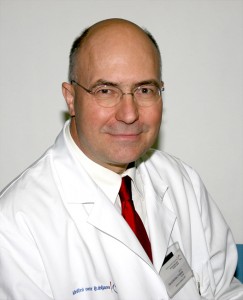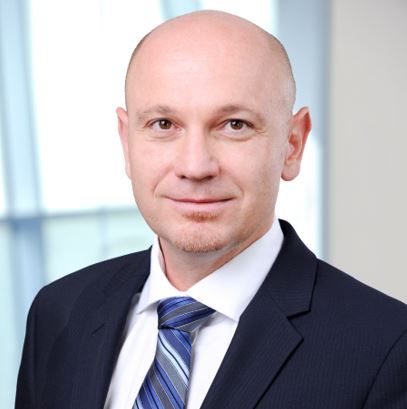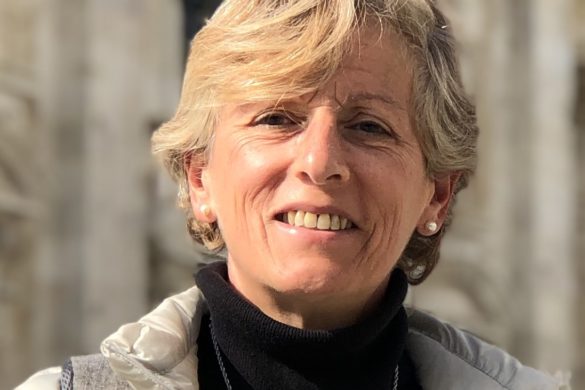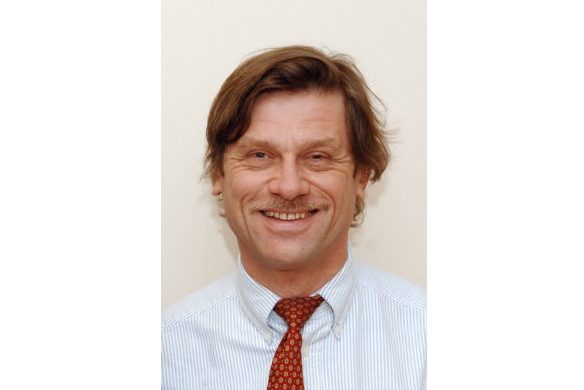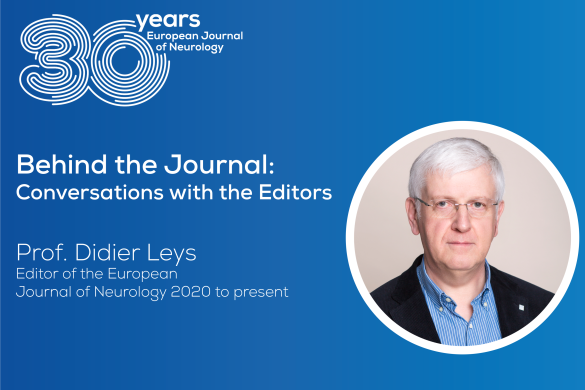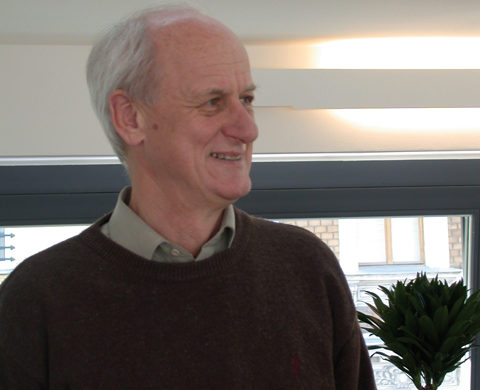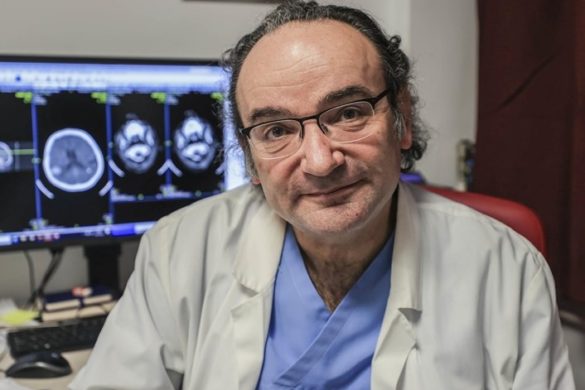Gian Luigi Lenzi (GLL): As Chair of the Liaison Committee, can you illustrate the role you give to EAN within the community of European neurologists?
David Vodušek (DV): We Europeans have become accustomed to “European institutions”. Although – related to politics – there are “Euro-sceptics”, I do not believe that there are many “Euro-sceptics” when it concerns science, sharing of knowledge, exchange of students, common projects… Extending that to neurology and neurologists, I sincerely believe that the previous two societies were seen by the majority of neurologists as “embarrass de richesses”, but one society (i.e. EAN) is seen as undoubtedly necessary (to coordinate activities of common interest, focus on issues that need to be solved on the European level, and put – as it is said – neurology on the European map as a strong player in the field of Health, Medicine and (Neuro) science). This would also be the role I envision for EAN, and I really believe this is a role that is defined “bottom up”, not “top-down”. The Chair of the EAN Programme committee Paul Boon has formulated it well: “The EAN is providing neurologists with a potentially very strong instrument to enhance the professional and academical quality and status of neurology in Europe.” (Neuropenews, August issue, 2014).
GLL: EAN needs to be the overall umbrella for neurology and neurology related specialties. How can the Liaison Committee bring an added value to this aim?
DV: I am of the generation of neurologists that intrinsically values “general neurology”, because I have been brought up with that legacy. Of course we need subspecialties in neurology; they are here to stay, they are growing fast, and they will develop further. But let me say that as we neurologists need them, the progress of neurology needs these subspecialties, the other way around is equally true: we , both as neurologists as well as sub-neuro-specialists, ALSO need (and I believe this need will go on growing ) general neurology. I would also claim that PATIENTS need general neurology, probably particularly the elderly. If we do not pay attention we shall lose them to geriatrics, and we shall keep only those referred to subspecialties.
We also have a need of interactions between the different subspecialties. This I would claim to be the “added value” of EAN – EAN as the meeting point of all clinical neuroscience, the melting pot, or at least a catalyser for such interaction. I would hope that the leaders of subspecialties see the necessity of keeping the link to neurology, and that they do not seek splendid isolation but want to share duties and privileges in the broad field of clinical neuroscience. I hope they recognize EAN as their natural collaborator in developing and upgrading European neurology from East to West / North to South in a “win-win” situation of playing together. There is overlap between the fields, and EAN is an ideal platform to share knowledge, exchange ideas, and bring relevant new (subspecial) knowledge to those neurologists, who are not subspecialists. (And of course subspecialists might want to keep in touch with other fields of neurology …).
GLL: What is your view on the future of the educational grants for young neurologists EAN makes available?
DV: I would opt for boosting that effort in all ways possible, also following it up with keeping track and pointing out papers etc. that were the result of the grants, and creating a (virtual) “Club” of ex-grantees. Young neurologists should be encouraged to be proud of being or have been fellows in EAN educational or scientific programmes.
GLL: Can you share with our readers your vision on how Neuropenews can help strengthen EAN’s identity?
DV: Neuropenews is of course a favourite topic of mine since I was lucky to be invited by the initiator and creator of Neuropenews (i.e. GLL) to become co-editor right in the beginning of this electronic neurological media item. I feel we have developed a vision of Neuropenews together that benefits primarily the community of European neurologists, but thus (in my mind) “benefits” also the organisation that supports it. We wished a bulletin and a blog covering neurology in the widest sense, including also art, history, trivia… We hoped – and have to some extent achieved – to attract other societies to use Neuropenews as the vehicle to spread information and points of view.
Thus, Neuropenews had (and hopefully will keep) a vision of being – metaphorically speaking – an ancient Greek Agora or Roman Forum, where all European neurologists (can) meet one another (and the visiting non-European neurologists, too!). Perhaps they just look for the news on the neurological horizon, or come to exchange ideas, share knowledge and practical suggestions – all in a friendly intellectual atmosphere. I believe EAN’s identity is thus (although possibly somewhat indirectly) very much enhanced; I see EAN as the benign ruler of “neurological Athens” who welcomes everybody with good intentions to come to the agora /Neuropenews/ and have a good and profitable time.
Let us furthermore not forget that to forge a community (of European neurologists) we need a place where communication can be continued after we part our ways on the last day of the EAN Congress. This, I think, is especially important for committee work, particularly for the Education and the Scientific committee missions and activities. I hope that these committees will accept the challenge and co-edit parts of Neuropenews which will be specifically dedicated to Education in neurology and Scientific cooperation in neurology, respectively.
I come back to the point that neurologists may be divided – considering several determinants – in cohorts, and Neuropenews (and EAN) can build bridges between them. I have already mentioned the subspecialties; but there are also age related cohorts: the “neurologists-in-formation” /young neurologists, the “competing-leaders-in-formation”, the “academicians”. The informal interaction that can be achieved through Neuropenews can forge the EAN identity throughout the age range.
It could be argued that the “competing-leaders-in-formation” may tend to prefer – due to time constrictions – the subspecialities’ meetings to the EAN Congress; but their involvement in EAN Subspecialty Scientific panels, recruitment into Task forces and appearance in Neuropenews may be a win-win situation for their formatting careers and for EAN, and Neuropenews may help to build their presence in the national and international arena.
Last but not least I would hope Neuropenews can also bring the agenda of national neurological societies closer to the focus of EAN, so that the “yearly meeting of delegates” (EAN Assembly of Delegates) and elections will not be the only instance when national societies interact with one another, and EAN. By strengthening the input of national societies to Neuropenews I see a gain for the EAN identity: EAN is a community of European national neurological societies, and individual members. Both groups act and react somewhat differently, but both should make their activities and concerns known to EAN.
Neuropenews is the best way to do this.
David Vodušek is Professor of Neurology at the Medical Faculty, University of Ljubljana and Medical Director of the Division of Neurology, University Medical Center Ljubljana, Slovenia.

